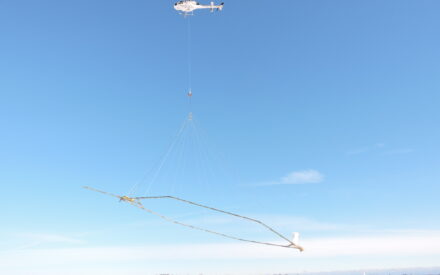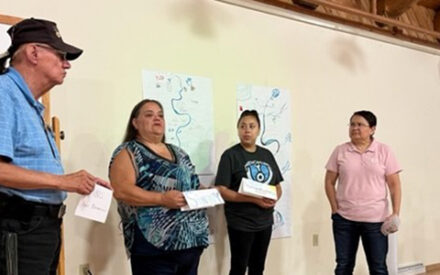Black ash trees are abundant along the St. Louis River Estuary and the Lake Superior coast. After the non-native emerald ash borer reached the region in 2013, these trees and the habitat they provide may be lost. When cover provided by black ash trees begins to decline, invasive shrubs growing in the understory are poised to take over, preventing forests from regrowing. With increasing extreme storms in the region, a loss of wetland forests may significantly increase erosion, consequently increasing sedimentation in the estuary and nearshore Lake Superior, conditions which may also be favorable to harmful algae blooms when water temperatures are high in the summer months.
Beginning in 2023, the Lake Superior Reserve partnered with the Wisconsin Department of Natural Resources and WisCorps, a nonprofit conservation corps, to plant up to 60,000 tree seedlings along the St. Louis River Estuary. As they grow, the trees will maintain forests for birds and wildlife and protect islands and wetlands from erosion during high water or floods. They will also reinforce protective bays where manoomin (wild rice) is being restored.
Tree species were selected based on their tolerance for wet or flooded soils, ability to withstand warming temperatures in the region, and the cultural uses or traditions that they support, especially for Ojibwe people. The Reserve will monitor the success of these plantings over time. We are not yet certain which trees will thrive in this dynamic environment. However, the success of the 17 tree species included in this restoration project will inform similar efforts in Lake Superior’s vital coastal wetlands.
This project ensures the ecological function on 100 acres over three islands and two coastal wetlands at the headwaters of the Great Lakes system are maintained and improved, protecting water quality in nearshore Lake Superior and sustaining high-quality fishing and migratory bird habitat. By sustaining resilient habitats and hydrology throughout the St. Louis River Estuary it allows for the mitigation and prevention of the worst impacts from the loss of black ash-dominated wetlands, protects recreational experiences on the river, and supports conservation efforts. Additionally, each year of the project supports three to four weeks of employment for 10 AmeriCorps members participating in Wisconsin Conservation Corps’ stewardship teams, who benefit from interaction with partners at the Wisconsin DNR, Fond du Lac Band of Ojibwe, University of Wisconsin-Superior and Reserve staff. Neighborhoods adjacent to the St. Louis River in both Wisconsin and Minnesota retain ecosystem service benefits provided by healthy wetlands- including protection from flooding, aesthetic values, and biodiversity.
Download Article

 Depth-to-Bedrock: Updated Mapping & Decision-Making
Depth-to-Bedrock: Updated Mapping & Decision-Making Building High-Quality Programs to Help Youth Thrive
Building High-Quality Programs to Help Youth Thrive Nature’s Navigators: Supporting Neurodiverse Learners
Nature’s Navigators: Supporting Neurodiverse Learners Centering Culture & Language in Leadership Programs
Centering Culture & Language in Leadership Programs


